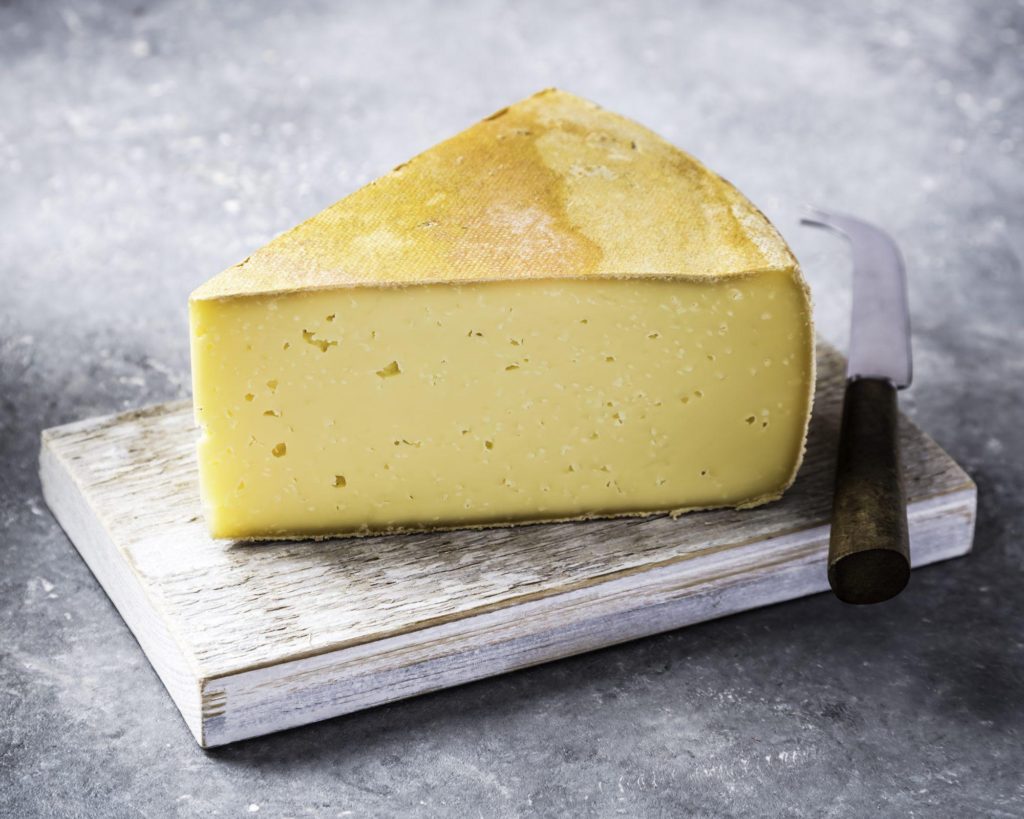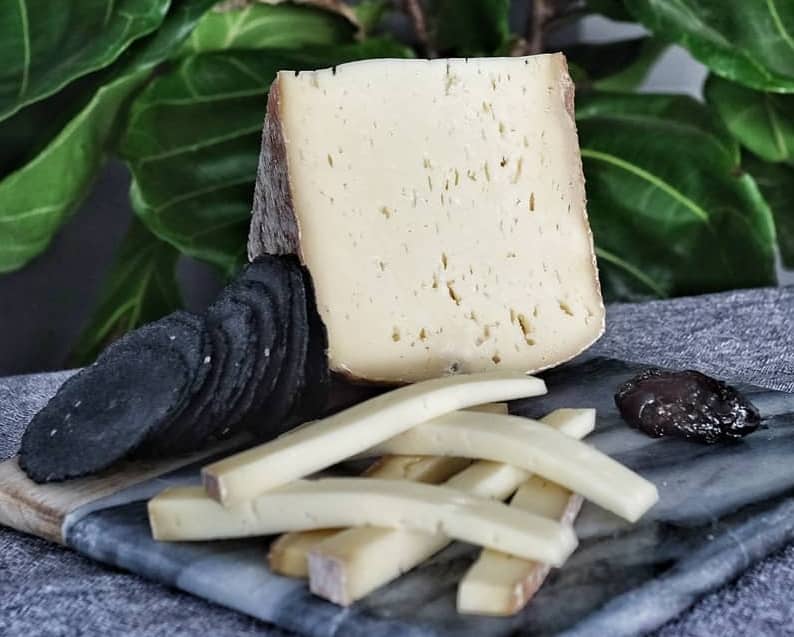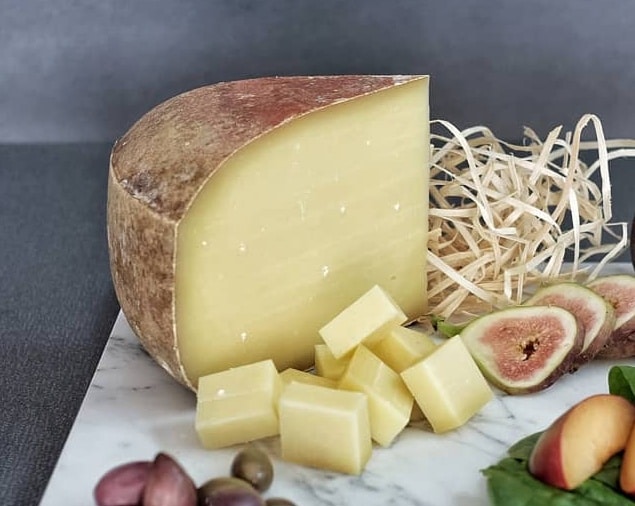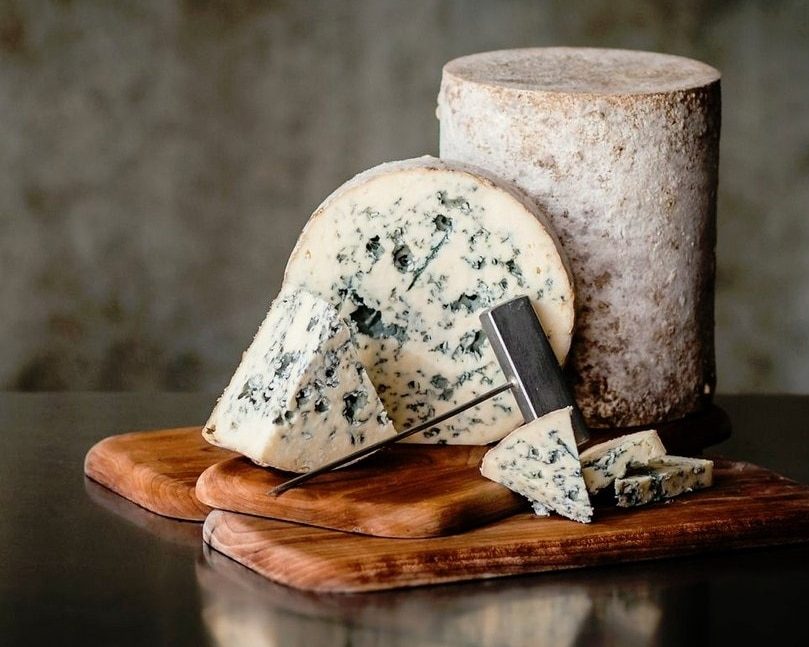Parmigiano Reggiano is considered to be the King of Cheeses in Italy
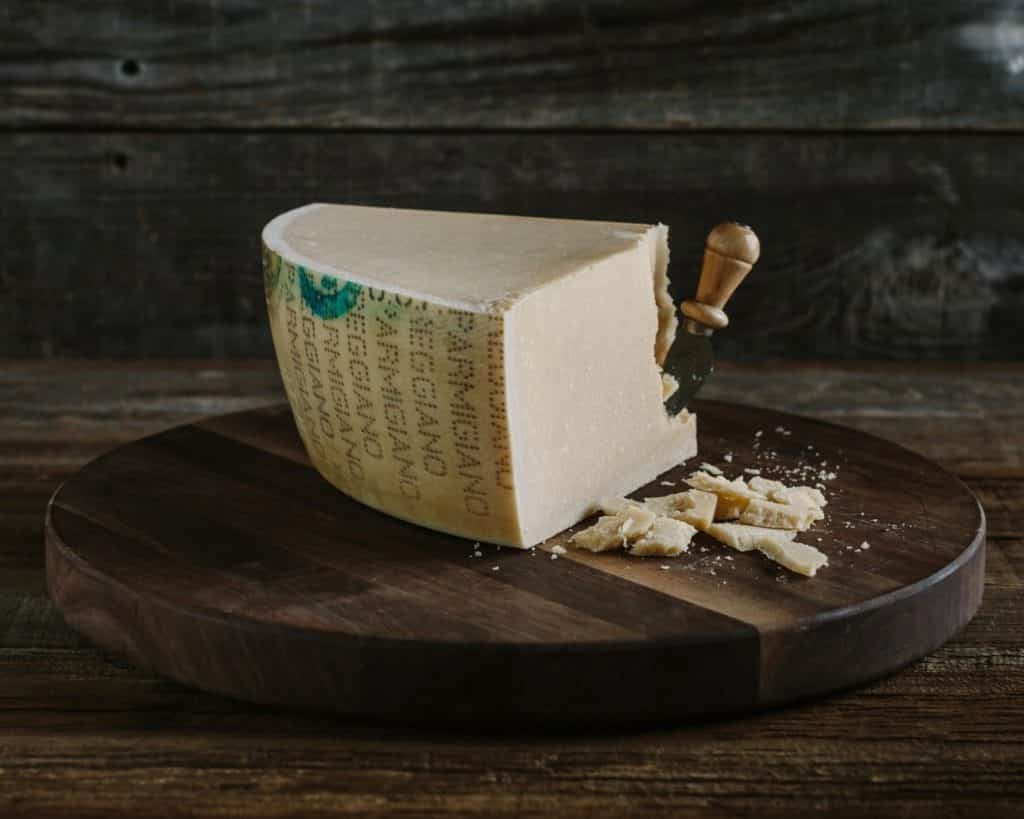
What is Parmigiano Reggiano?
Parmigiano Reggiano is a traditional raw cow’s milk hard cheese from Northern Italy.
Effectively, it dates back to the Middle Ages when Benedictine and Cistercian monks were the first producers. As a result of their commitment to developing a long-lasting cheese, they started using salt from the Salsomaggiore salt mines to make a hard cheese.
Parmigiano Reggiano: the protected name
Since 1996, the European Union has bestowed this Italian hard cheese with a Protected Designations of Origin (PDO) stamp. In essence, this stamp ensure that only cheeses that are made according to strict regulations can bear the name.
Without a doubt, they wanted to protect the Parmigiano Reggiano name because it is one of the most imitated cheese in the world.
Where is Parmigiano Reggiano made?
Parmigiano Reggiano is produced exclusively in the provinces of Parma, Reggio Emilia and Modena. Furthermore, the authorised regions also include Bologna, to the left of the Reno river. And Mantua, to the right of the Po river.
Significantly, this area hosts numerous farms where farmers exclusively feed their cows locally grown grass and forage. Furthermore, the PDO prohibits the use of silage, fermented feeds and animal flour.
How is Parmigiano Reggiano made?
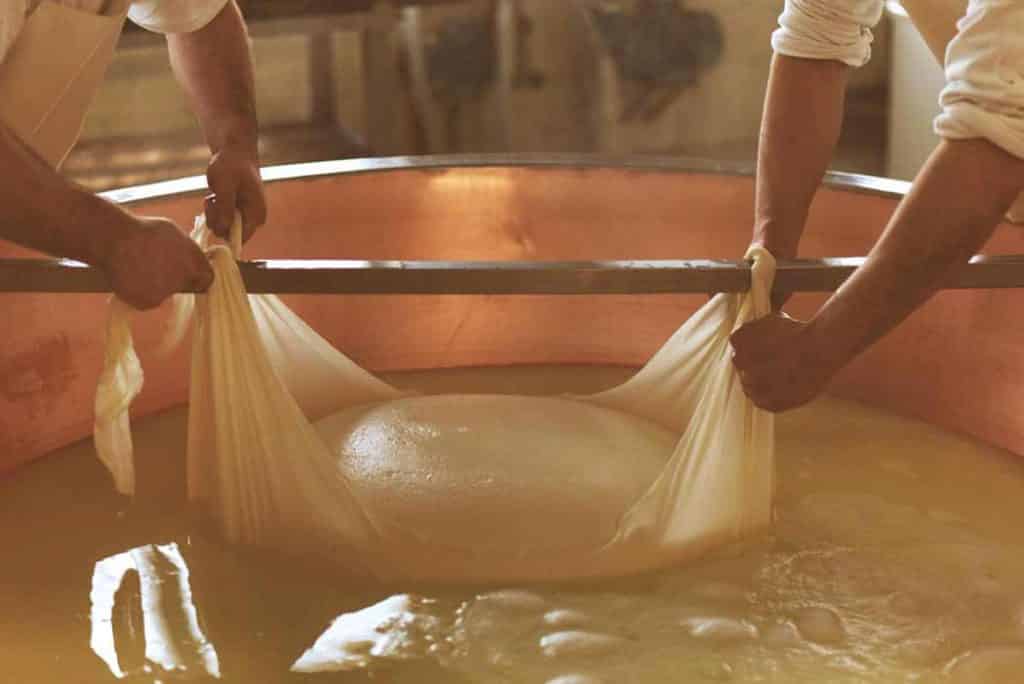
Always raw milk
It all starts with raw cow’s milk. Initially, the dairy collects the evening milk from the farm and lets it rest in a vat overnight. Come the morning, the cheesemaker skims the milk and mixes it with freshly delivered whole milk.
In addition to this, they also add calf rennet and fermented whey to the mixture. Once the curd sets, the maker uses a traditional tool called spino to cut the curd into tiny granules.
Cooked in a copper cauldron
Afterwards, they cook the curd to 55°C (130°F). Subsequently, this forms a large single mass at the bottom of the cauldron. Then, two cheesemakers collectively lift the mass from the bottom using a large cloth and a metal bar.
Finally, they cut each mass in half and place each half into one mould to form one wheel of cheese.
Apply a casein plate
Once the cheese is formed, the maker applies a unique casein plate to each wheel. From this point onwards, this will be its identity card and can be traced back to its production site.
A few days later, they immerse the wheels in a saturated brine solution. Indeed, this marks the final step of the production process.
How Parmigiano Reggiano is matured
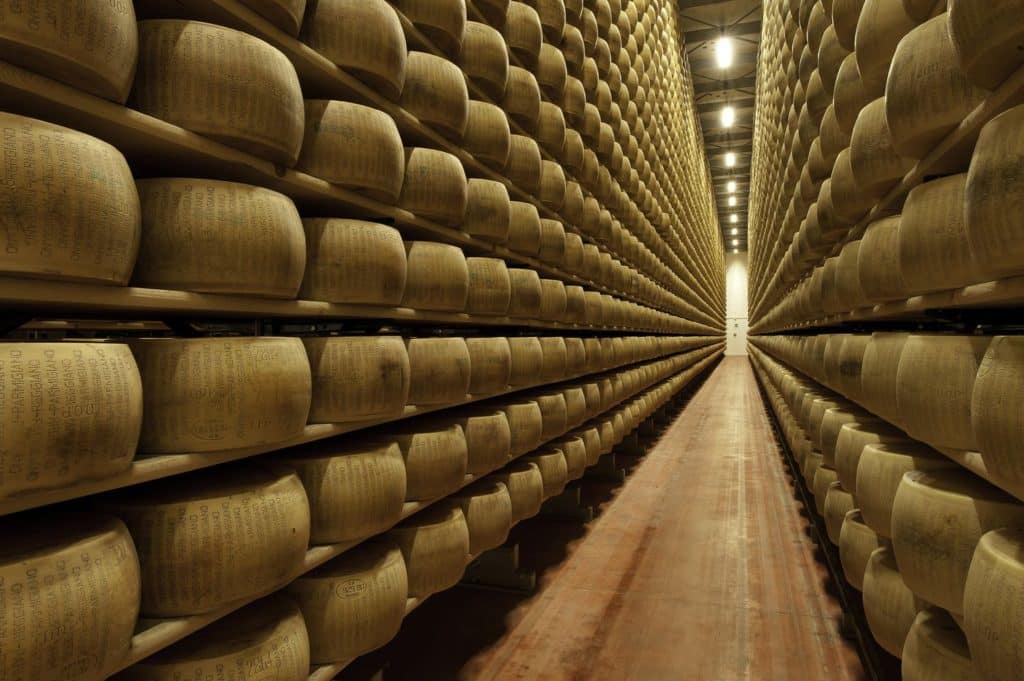
Undeniably, the life cycle of Parmigiano Reggiano is a long and slow one. Significantly, it follows the natural rhythm of the seasons in Northern Italy.
Additionally, the PDO dictates that even the “youngest” wheels of Parmigiano Reggiano have to be matured for a minimum of 12 months. At this point, each individual wheel is assessed and then selected for further maturation up to 40 months.
Unsurprisingly, the hard rind around this cheese poses some challenges to quality testing.
Branded by fire
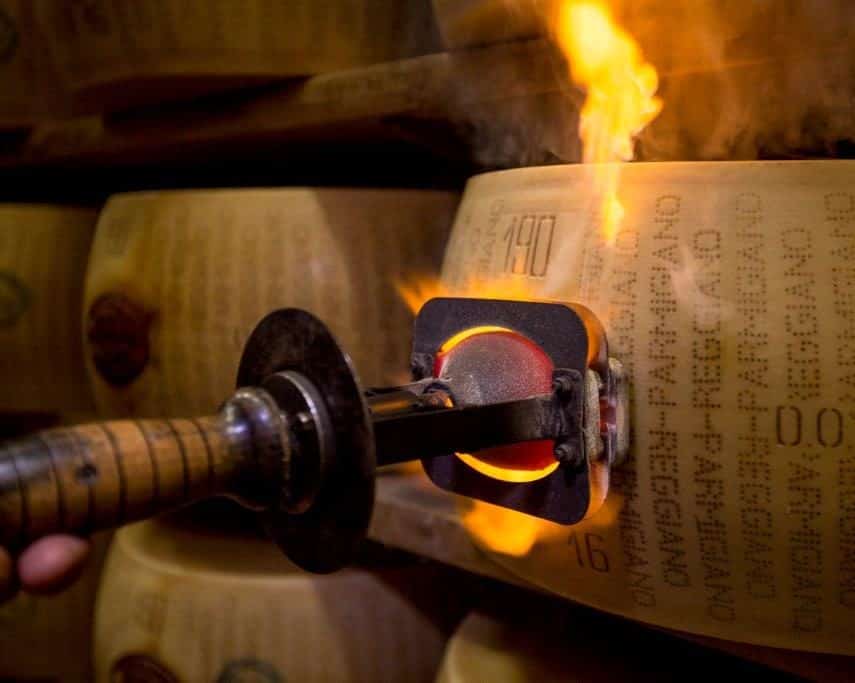
An expert from the Parmigiano Reggiano Consortium carries out a test that does not compromise the cheese. Using a hammer to tap the wheel, they can recognise any textural anomalies inside the cheese by ear.
Subsequently, they mark each wheel that conforms to the standard with a hot iron brand, officially recognising it as Parmigiano Reggiano.
Unfortunately, any wheels that do not meet the PDO requirements are stripped of their rind and sold as grating cheese.
G.Cravero Parmigiano Reggiano
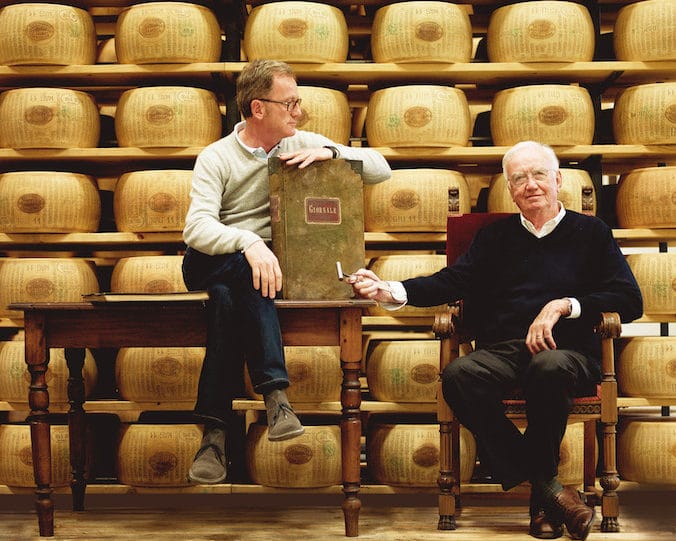
Five generations of affineurs
For five generations, the Cravero family has been selecting and maturing the very best Parmigiano Reggiano and Grana Padano.
In 1855 Giorgio Cravero, founded of the business. Since then, his offsprings have passed the tradition from father to son through five separate generations. Throughout this time, the one constant has been their passion for the art of selection and maturation.
Maturation rooms in Bra
Currently, head cheese affineur, Giorgio the third, carefully hand-selects 12 month old wheels of Parmigiano Reggiano at Latteria San Pietro in Reggio Emilia. Thereafter, he moves the selected wheels to their own maturing rooms in Bra, Piemonte.
The famous G.Cravero seal
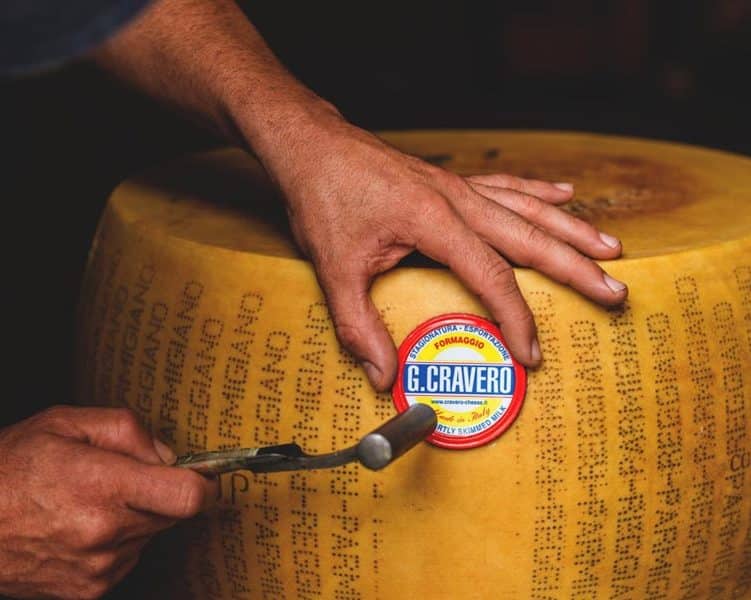
In this unique environment, the affineur has to pay close attention to the changing seasons and adapt the maturation conditions accordingly.
Overall, the time and attention lent to the care of these cheeses, guarantee the unique nature of this product.
After a minimum of 24 months, the wheels are assessed and stamped with the G.Cravero seal of approval. Finally, it has reached the end of its production and maturation journey and it now ready to be eaten.
How to cut Parmigiano Reggiano
Using the Tagliagrana
Cracking open an entire wheel of Parmigiano Reggiano is actually a mesmerising and artful process. Unsurprisingly, it takes years of practice to master.
For starters, the cheesemonger uses 3 different almond shaped knives called Tagliagrana. Using the tip of one, they mark a line along the middle and all around the wheel. Importantly, they can now demarcate 2 halves of equal weight and size.
Cracking the cheese
Afterwards, they carve the rind of the cheese using a second knife, following the previously marked line. Then, they plant two knives at the ends of the wheel and a third one in the centre.
Finally, gently wiggling the knives around will crack the cheese apart.
How to store Parmigiano Reggiano
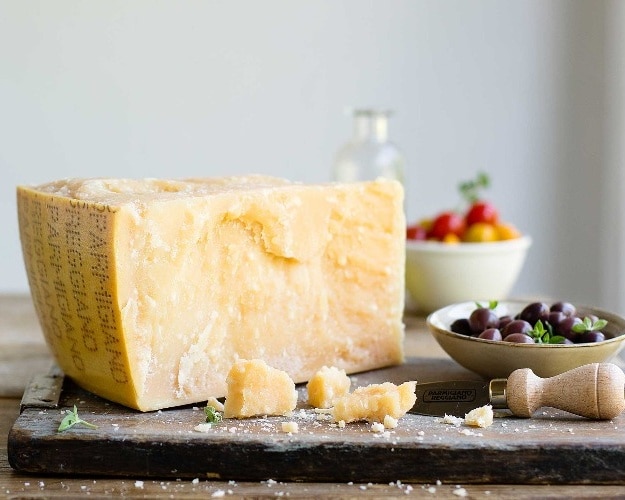
So you’ve brought home a freshly cut piece of Parmigiano Reggiano. What should you do with it? Firstly, you will need to keep it refrigerated between 4°C and 8°C. Moreover, it is best kept in waxed paper or a food grade beeswax wrap.
Besides, you will want to store it in a vegetable drawer or any other secluded section in your fridge. This ensures temperature and humidity control to preserve the cheese and protect it from contamination.
Freezing Parmigiano Reggiano
One final note, you should never freeze an intact chunk of cheese. If you do want to extend its shelf life, you can however grate the cheese and freeze it once grated. While this is not ideal, it might help reduce wastage.
What does Parmigiano Reggiano taste like?
At 24 months, Parmigiano Reggiano has a hard crumbly texture. Overall, your nose will detect a fruity and nutty aroma, which is particularly pronounced in a freshly cracked wheel.
On the palate, this most spectacular of Italian cheeses is incredibly complex with a range of flavours from fruity to savoury and umami. In addition to this, it leaves a wonderful savoury aftertaste which lingers for long after you’ve devoured the cheese.
Cooking with Parmigiano Reggiano
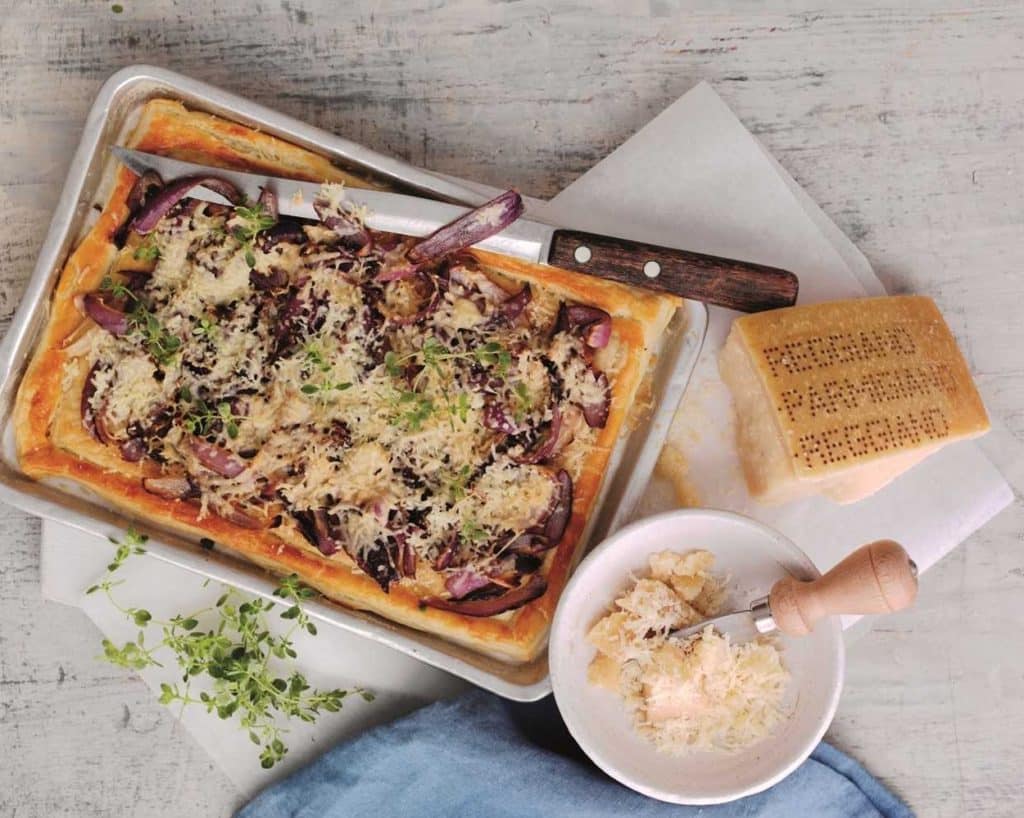
Parmigiano Reggiano is complex enough to be served on a cheese board but is also an excellent ingredient in cooking.
A G.Cravero Parmigiano Reggiano at 24 months is an excellent addition to a number of different dishes. Due to its complex flavour and moist texture, it can be grated fresh onto a rocket and pear salad. Or even cooked into your next pasta sauce.
How to pair Parmigiano Reggiano
This incredibly versatile hard cheese pairs well with white and red wines. Enjoy as a table cheese with a Pinot Grigio, Marsanne or Roussane.
As for red wine, try fruity wines with high acidity and low tannins like Corvina, Barbera and Gamay.
Parmigiano Reggiano vs Parmesan
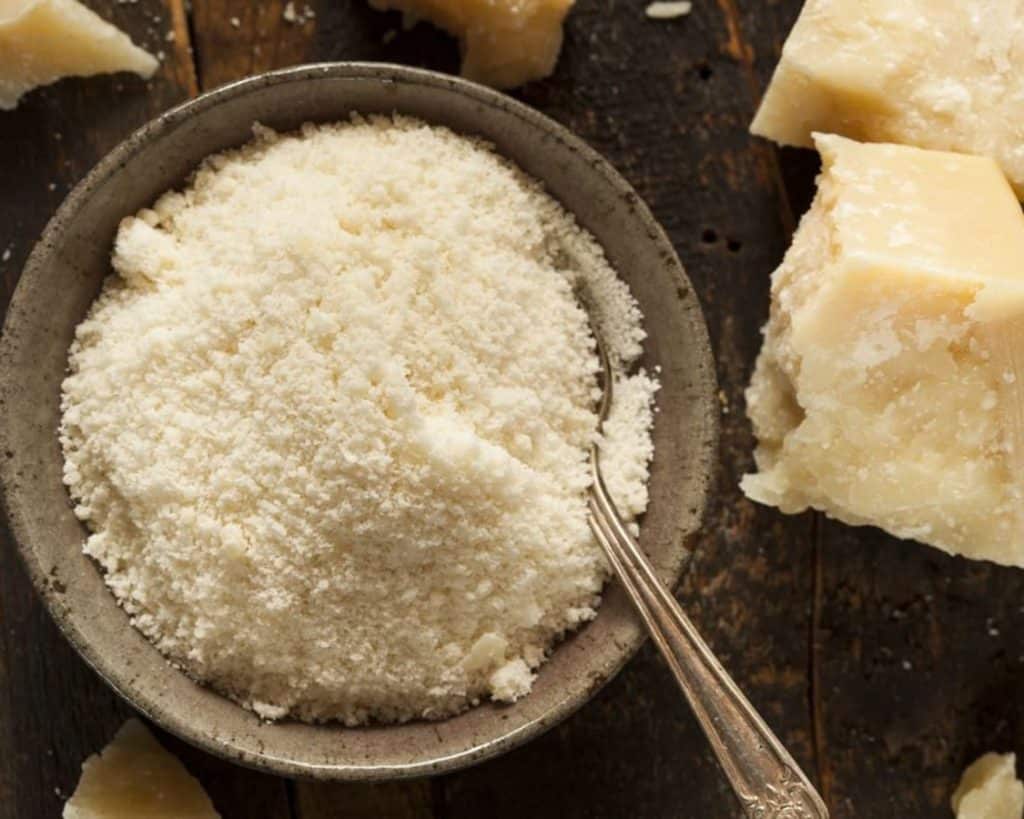
What is Parmesan?
Parmesan is the English translation of Parmigiano Reggiano. But, unlike the Italian name, it is not regulated. Consequently, a cheese labelled as Parmesan in the US or Australia will most likely be an imitation.
What does this mean in practical terms?
The cheese will most likely have been made with pasteurised milk and matured for less than 12 months.
Whilst it might still be delicious, it will most certainly not have the depth of flavour that Parmigiano Reggiano offers. So, always look for the Parmigiano Reggiano name and stamp.
You can read more about the differences between Parmigiano Reggiano and Parmesan by clicking here.
Thank you for reading
Thank you for reading this post about yet another amazing artisanal cheese. Have you tried this cheese before? Drop us a comment below with your thoughts.
If you enjoy learning about new cheeses, you can subscribe to our newsletter below. You will hear from us about once a week as we share new cheese profiles with you.
Finally, keep scrolling to find some more cheeses and recipes that have been recommended for you. Keep it cheesy!
